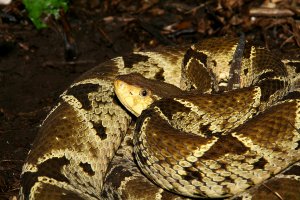September 14, 2015
Dr. Luis Fernando Chaves et al. Report a Correlation between Snakebites and El Nino in Science Advances
Dr. Luis Fernando Chaves, Institute of Tropical Medicine, et al. report a Correlation between Snakebites and El Nino in Science Advances.
“Snakebites are an environmental and occupational health hazard, mainly affecting rural populations worldwide. The ectothermic nature of snakes raises the issue of how climate change impacts on snake ecology could influence the incidence of snakebites in humans in ways that echo the increased predation pressure of snakes on their prey. We thus ask whether snakebites reported in Costa Rica (CR) from 2005 to 2013 were associated with meteorological fluctuations. We place emphasis on El Nino Southern Oscillation (ENSO), a climatic phenomenon associated with cycles of other neglected tropical diseases (NTDs) in the region and elsewhere. We also ask how spatial heterogeneity in snakebites and poverty are associated, given the importance of the latter for NTDs. Here, we found that periodicity in snakebites reflects snake reproductive phenology and are associated with ENSO. Snakebites are also more likely to occur following hot temperatures and can be significantly reduced after rainy years. Nevertheless, snakebites cluster in the areas with the heaviest rainfall in CR, increase with poverty indicators and decrease with altitude. Altogether, our results suggest that snakebites might be varying as a result of ongoing climate change.”
Article: Snakebites are associated with poverty, weather fluctuations and El Nino
Article:Snakebites are associated with poverty, weather fluctuations and El Nino

"Female Bothrops asper from the Caribbean basin of Costa Rica. This snake, commonly known as "terciopelo", is responsible for most of the snakebites in Costa Rica and other countries in the Neotropical region"










